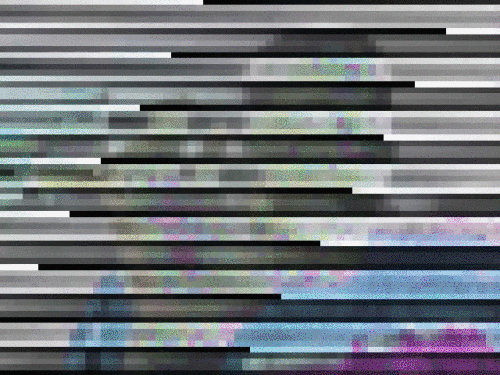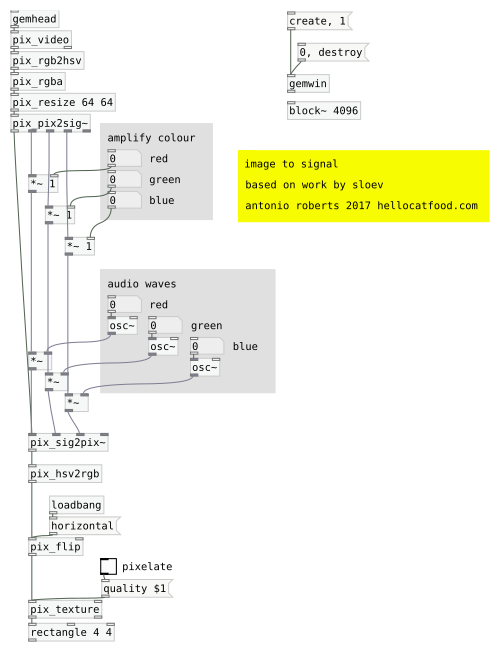In the years that I’ve been creating things in Pure Data I have amassed quite a collection of unfinished and messy patches. Over the next few days I’ll be releasing a few of these patches and techniques that I implement when programming in Pure Data.
Image to Signal
If you’re into experimental ways of creating visuals and happened to be on the internet around 2013 you have have been sent information about software called PixiVisor. The software, developed by Alexander Zoloto, allows one to transmit an image via an audio signal to another device which decodes it and displays it as an image. In this way you can then apply audio effects to the signal and make some pretty cool visuals. I never tried it myself but was quite impressed by what I saw.
Being the open source kinda guy that I am, and a devout use of Linux I was interested in knowing if there was a way of reproducing this using open source software.
sloev got in touch with me some time later in 2013 to demonstrate a Pure Data patch he made that quite faithfully reproduced PixiVisor in Pure Data!
Like PixieVisor this worked by having two devices, one to transmit and another to receive. I quite quickly and roughly rewrote the patches so that this process was done all in one patch. Its first outing was the 2013 Pecha Kucha event in Coventry where I provided visuals for Ashley James Brown/Arctic Sunrise.
The patch works by using the [pix2sig] and [sig2pix] objects. As their names suggests they convert audio signals to pixels and vice versa. The key to how the Pixievisor remix patch works is setting the block size. This tells your computer how many audio signals to process per frame and therefor how many pixels.
By default on Pure Data this is set to 64, which would allow us to work with an image 8 x 8px which is tiny.By increasing the block size to 4096 we can begin to work with images of size 64×64 (because 64 x 64 is 4096).

You might now be thinking that you can increase the block size and work with higher resolution images. Well, that’s not really possible unless you want to sacrifice frame rate. If we take a commonly used video resolution, 640 x 480, you would need a block size of 307200. Try doing this and come back when your computer has done crashing 😉
With sloev’s blessing I am now releasing this modified patch.
The patch is set to use the webcam as an input but it can accept any media input that Pure Data can handle. If you don’t want to have to resize everything before bringing it into Pure Data you can always use [pix_resize] to, um, resize your input live. This has the added benefit downside of putting extra strain on your computer.
Perhaps it’s a dream that will never come true, but it would be good to one day be able to have a completely open source, multiplatform solution for video synthesis. I like the look of Lumen but unfortunately it’s Mac only 🙁 Until then, hope you enjoy the patch!

